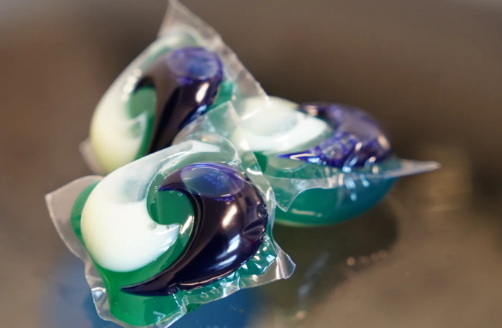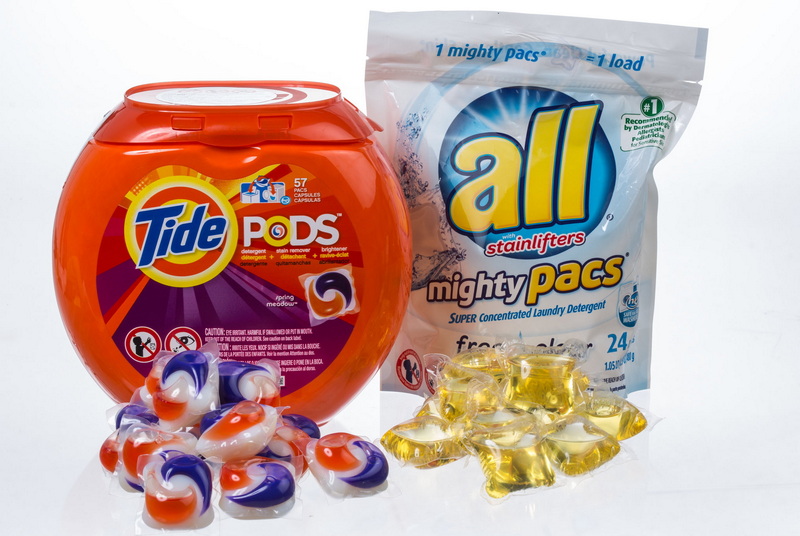Dongguan UFine Daily Chemical Co.,Ltd.
- All
- Product Name
- Product Keyword
- Product Model
- Product Summary
- Product Description
- Multi Field Search
Views: 222 Author: Tomorrow Publish Time: 10-23-2025 Origin: Site











Content Menu
● Overview of Laundry Pod Ingestion
● Reported Deaths from Laundry Pod Ingestion
● Causes of Death and Health Impact
● Clinical Presentation and Toxicology
● The Tide Pod Challenge and Its Impact
● Safety Measures and Manufacturer Response
● Demographic Trends and Exposure Rates
● FAQ
>> 1. How many people have died from eating laundry pods?
>> 2. Why are laundry pods dangerous to ingest?
>> 3. Who is most at risk of laundry pod poisoning?
>> 4. What did manufacturers do to reduce laundry pod poisoning?
>> 5. Are there ongoing efforts to prevent laundry pod deaths?
Laundry pods, a convenient laundry detergent product, have posed significant health risks since their introduction. Their brightly colored, candy-like appearance has led to accidental and intentional ingestion, causing serious injuries and deaths. This article explores the number of deaths related to eating laundry pods, the causes, demographics affected, safety measures, and ongoing public health concerns.

Laundry pods, first widely available around 2012, are single-dose packets of concentrated detergent wrapped in a soluble film. Their appealing look has led to accidental ingestion, particularly among young children, and more dangerously, intentional ingestion in various challenges such as the "Tide Pod Challenge" meme in early 2018. These packets contain potent chemicals that can cause severe poisoning when swallowed.[6][10]
Since the introduction of these pods, there have been reported fatalities directly linked to their ingestion. Between 2012 and 2017, six deaths were documented from pods produced by Procter & Gamble's Tide brand alone. Broader reports indicate that at least eight people have died from eating laundry pods in total, including cases unrelated to Tide specifically.[11][6]
Children under five constitute the majority of accidental exposure cases, with ingestion accounting for about 80% of exposures. Hospitalizations occur in about 4.4% of cases, with some requiring advanced airway management due to aspiration or respiratory complications. From 2012 to 2024, recent studies reported nine adult fatalities, mostly older adults above 70 years, associated with laundry pod ingestion, highlighting that fatal outcomes are not just confined to children.[1][10]
The deaths caused by laundry pod ingestion are primarily due to the toxic effects of the chemicals in the pods. Pods contain a mixture of surfactants, solvents, and other toxic chemicals like 1,4-dioxane, which is a known carcinogen and causes chemical burns and respiratory distress upon ingestion or inhalation. Exposure to these chemicals can lead to:
- Chemical burns in the mouth, throat, and stomach
- Severe respiratory distress and lung injury
- Central nervous system depression
- Aspiration pneumonia from inhaling liquid detergent
These severe reactions can, in some cases, lead to fatal outcomes, especially in young children or vulnerable individuals.[10][11]
The ingestion of laundry pods can cause a wide range of symptoms. Nausea, vomiting, diarrhea, and oral mucosal burns are common. More severe cases include difficulty swallowing (dysphagia), seizures, changes in mental status, respiratory distress, and electrolyte imbalances. The water-soluble membrane dissolves quickly in the mouth or stomach, releasing the concentrated detergent and increasing the risk of chemical burns and aspiration.[4][6]
Pods are more likely to cause vomiting, coughing, choking, and drowsiness than non-pod detergents. Severe cases may require intubation and respiratory support. Eye and skin exposures have caused alkaline burns and severe dermatitis, adding to the overall risk profile.[4]

A viral internet challenge in late 2017 and early 2018 encouraged people, especially teens, to consume laundry pods as a prank or dare, despite explicit warnings about fatal poisoning risks. This trend caused a spike in intentional ingestion cases among adolescents, although deaths from this cause remain relatively low compared to accidental ingestion in young children.[5][6]
Manufacturers and social media platforms took steps to combat this trend by removing challenge-related content, adding bittering agents to pods, and educating the public about the dangers. Despite these efforts, the appeal among some adolescents lingered briefly as a dangerous fad.[6]
Recognizing the risks, manufacturers such as Procter & Gamble changed packaging to be less attractive and introduced opaque containers along with child-resistant locks. They also incorporated bitter-tasting chemicals to discourage ingestion and added clear warning labels. Public health agencies have strongly urged parents to keep laundry pods out of reach of children to prevent accidental poisonings.
Despite these measures, the poisoning rate remains significant, demonstrating that ongoing vigilance and public education are essential to reduce fatalities and injuries. The ASTM Standard Safety Specification for liquid laundry pods introduced in 2015 and updated in 2022 aims to set safety benchmarks, but experts believe more stringent requirements such as individual packaging and poison prevention packaging compliance are necessary.[12][1][10][6]
Most exposures occur in children under six years old, accounting for about 87% of cases reported to poison centers. The number of exposures for young children remains high despite falling rates over recent years. Meanwhile, exposures among older children, teens, and adults have increased, raising concerns about a broader risk profile for laundry pod poisoning.[8][1]
The majority of exposures occur in residences, emphasizing the need for safe storage and household awareness. Hospitalizations occur in approximately 4.4% of cases, with a small portion requiring intensive care due to airway management.[9][1]
There have been legal challenges against manufacturers citing product liability, arguing that pods remain unreasonably dangerous and that safer alternatives or better warnings could have reduced harm. Some lawsuits highlight that manufacturers were aware of the risk but delayed sufficient action.[11]
Regulators continue to monitor laundry pod exposures and work on standards to improve safety, packaging, and public awareness.[12]
In summary, while death from eating laundry pods is relatively rare, there have been at least eight reported fatalities, with several more severe poisonings and hospitalizations, mostly among young children. The dangerous chemicals within laundry pods cause severe health impacts, and intentional ingestion trends have added complexity to the issue. Despite safety improvements, continued vigilance and education are crucial to minimize these preventable deaths.

At least eight deaths have been confirmed from laundry pod ingestion since their introduction, mostly due to accidental ingestion by young children, with recent adult fatalities also reported.[1][6][11]
They contain concentrated chemicals that cause chemical burns, respiratory distress, and can depress the central nervous system, potentially leading to fatal outcomes.[10][11]
Children under the age of six are at highest risk due to accidental ingestion, with some teenagers and adults also affected by intentional ingestion and exposure trends.[1][10][12]
Manufacturers introduced child-resistant packaging, opaque containers, bittering agents, and prominent warning labels to reduce accidental ingestion.[6][1]
Yes, regulatory agencies, manufacturers, and healthcare professionals continue public education campaigns and push for safer product designs to prevent poisoning.[10][12][1]
[1](https://www.nationwidechildrens.org/newsroom/news-releases/2024/01/gaw_laundrydetergentpackets_clinicaltoxicology)
[2](https://www.texaschildrens.org/content/wellness/dangers-consuming-laundry-detergent-pods)
[3](https://wvutoday.wvu.edu/stories/2023/04/04/wvu-researchers-sound-alarm-on-continued-high-rate-of-detergent-pod-ingestion)
[4](https://pedemmorsels.com/laundry-detergent-pod-toxicity/)
[5](https://www.emra.org/emresident/article/laundry-pod-challenge)
[6](https://en.wikipedia.org/wiki/Consumption_of_Tide_Pods)
[7](https://www.mother.ly/parenting/safety/kids-and-adults-poisoned-by-laundry-pods-increasing/)
[8](https://www.yahoo.com/lifestyle/poisoning-from-laundry-detergent-pods-has-gone-up-among-older-children-teens-and-adults-heres-why--and-how-to-stay-safe-230053953.html)
[9](https://publications.aap.org/pediatrics/article/134/6/1127/33220/Pediatric-Exposure-to-Laundry-Detergent-Pods)
[10](https://pubmed.ncbi.nlm.nih.gov/25384489/)
[11](https://www.napolilaw.com/zh/article/%E4%B8%8E%E6%BD%AE%E6%B1%90%E8%B1%86%E8%8D%9A%E6%8C%91%E6%88%98%E6%9C%89%E5%85%B3%E7%9A%84%E6%B3%95%E5%BE%8B%E9%97%AE%E9%A2%98/)
[12](https://www.cdc.gov/mmwr/preview/mmwrhtml/mm6141a1.htm)